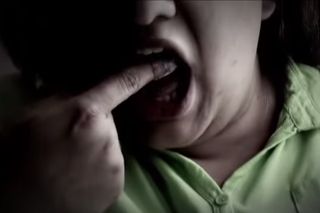Getting Tattooed & Eating Human Ashes: 6 Strange 'Addictions'

Many people get cravings for a cigarette or a glass of wine. But what about a potent desire to get tattoos or eat human ashes?
Merriam-Webster defines an addiction as "a strong and harmful need to regularly have something (such as a drug) or do something (such as gamble)," or "an unusually great interest in something or a need to do or have something."
But there are things that people develop cravings for that psychologists may not recognize as true addictions. Although these fixations are not in the Diagnostic and Statistical Manual of Mental Disorders (DSM), we've dug up a few of the perhaps stranger obsessions people have been known to have. (Note: Don't try these at home.) [Hypersex to Hoarding: 7 New Psychological Disorders]
Chewing ice
Ever have a friend who loved to chew ice? Well, the tendency to compulsively chew and consume excessive amounts of ice actually has a name: Pagophagia. The habit is a form of pica, a condition that comes with a tendency to eat non-food items that have no nutritional value, such as clay, soil or paper. Chewing ice may be a sign of iron deficiency anemia, according to the Mayo Clinic. Less often, pica can be a sign of emotional problems, such as stress or obsessive-compulsive disorder.
Eating human ashes
A woman who eats the ashes of her cremated husband is just one of the people with an unusual obsession who was profiled on the TV series "My Strange Addiction," which airs on TLC. The woman in the episode, named Casie, was apparently so saddened by her husband's death that she carried an urn of his ashes everywhere she went. One day, some of the ashes got on her finger, and rather than dust them off, she decided to lick them. Since then, she has consumed about a pound of her husband's remains, according to TLC.
Sign up for the Live Science daily newsletter now
Get the world’s most fascinating discoveries delivered straight to your inbox.
Tanning
Everyone enjoys a sunny day at the beach, but the reason for some people's enjoyment may have a darker side. Tanning – whether outside or in tanning booths – may actually be addictive, according to researchers at The University of Texas Medical Branch, Galveston. The scientists published a study in 2005 in the journal Archives of Dermatology that found that up to 53 percent of beachgoers met the diagnostic criteria to be classified as "ultraviolet light tanning-dependent."
The addiction may be based on the fact that when the body is exposed to ultraviolet (UV) light, it produces mood-boosting chemicals called endorphins, the researchers said. Another study by researchers at Wake Forest University Baptist Medical Center found that people who tan eight to 15 times a month experience withdrawal symptoms when they are deprived of UV-light.But tanning poses a health risk, because exposure to UV light is linked to developing skin cancer, studies show.
Getting tattoos
One in five U.S. adults has a tattoo, according to a 2012 Harris poll. While the behavior rarely crosses over into a true addiction, many people say there's no such thing as just getting one tattoo. Some people may crave the endorphins that the body releases in response to the pain of going under the needle; others may use the physical pain as a psychological distraction from their emotional pain, according to wiseGEEK.org. People who engage in cutting and other forms of self-injury may also be showing the symptoms of a mental illness, such as borderline personality disorder or depression, according to the Mayo Clinic.
Internet addiction
Yes, you might have this one. Internet addiction disorder, also known as problematic Internet use or compulsive Internet use, refers to people excessively using a computer — whether it be for gaming, social media or pornography — that interferes with daily life. Studies estimate that approximately 9 million Americans could be labeled as "pathological computer users addicted to the Internet to the detriment of work, study, and social life," according to a 2009 report published in the journal CyberPsychology & Behavior.
The fifth edition of the Diagnostic and Statistical Manual of Mental Disorders (DSM-5) identified Internet gaming disorder as "a condition warranting more clinical research and experience." This means that mental health professionals are studying this problem, and may consider it for inclusion in the main book as a formal disorder.
Drinking air freshener
Another episode of "My Strange Addiction" featured a woman named Evelyn, who is addicted to drinking air freshener. The 20-something woman from Missouri spritzes the cleaning mist into her mouth up to 50 times a day, and goes through 20 cans of air freshener a week, the Washington Post reported. The habit began when an automatic air freshener dispenser in her house accidentally sprayed onto Evelyn's drinking glass as she was walking past, and she found she liked the taste. Her favorite flavor is "fresh linen," she said.
Follow Tanya Lewis on Twitter. Follow us @livescience, Facebook & Google+. Original article on Live Science.
